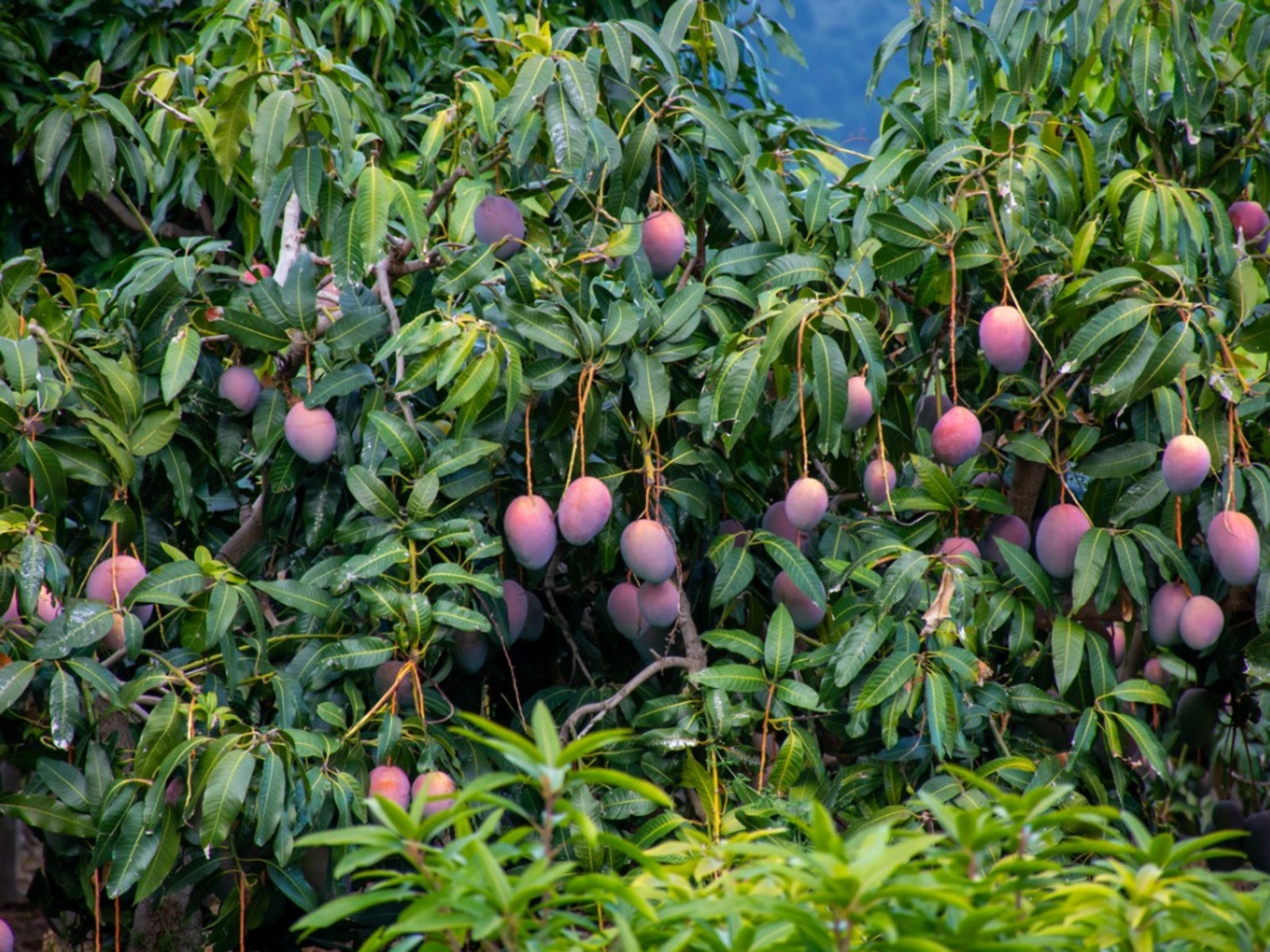Mango Sun Damage: Treating Mangoes With Sunburn


Did you ever apply a magnifying glass to an ant? If so, you understand the action behind mango sun damage. It occurs when moisture concentrates the sun's rays. The condition can cause unmarketable fruits and stunt them. Mangoes with sunburn have reduced palatability and are usually used to make juice. If you want to save the juicy fruits for out of hand eating, learn how to stop mango sunburn in your plants.
Recognizing Mangoes with Sunburn
The importance of sunscreen in humans is indisputable but can mangoes get sunburnt? Sunburn occurs in many plants, whether fruiting or not. Mango trees are affected when grown in areas with temperatures that exceed 100 degrees Fahrenheit (38 C.). A combination of moisture and high sun and heat are the culprits of mango sun damage. Preventing mango sunburn occurs with either chemicals or covers. There are several studies on the most effective methods. Mangoes that have become sunburnt have some portion, usually the dorsal surface, that is dry and shrunken. The area appears necrotic, tan to brown, with darker lining the edges and some bleed around the area. Essentially, the area has been cooked by the sun, just as if you held a blowtorch to the fruit briefly. It occurs when the sun is scorching and water or other sprays are present on the fruit. It is called the "lens effect" where the sun's heat is magnified on the skin of the mango.
Preventing Mango Sunburn
Recent developments suggest that several chemical sprays can help prevent sunburn in fruit. A trial in the Journal of Applied Sciences Research found that spraying a 5 percent solution of three different chemicals caused significantly less sunburn and fruit drop. These are kaolin, magnesium carbonate and calamine. These chemicals deflect radiation and the UV wave lengths that touch fruit. When sprayed annually, they reduce the temperatures that reach the leaves and fruit. The trial was conducted in 2010 and 2011 and it is unknown if this is now a standard practice or still undergoing testing. For quite some time, mango farmers would put paper bags over developing fruit to protect them from sun damage. However, during rain, these bags would collapse over the fruit and promote certain diseases, especially fungal issues. Then plastic caps were used over the fruit but this method could cause some moisture build up as well. A new practice uses the plastic "mango hats" that are lined with wool. Embedded in the wool lining are beneficial bacteria and a copper compound to help combat any fungal or disease issues. The results with the woolly hats showed that less sunburn occurred and the mangoes remained healthy.
Sign up for the Gardening Know How newsletter today and receive a free copy of our e-book "How to Grow Delicious Tomatoes".

Bonnie Grant is a professional landscaper with a Certification in Urban Gardening. She has been gardening and writing for 15 years. A former professional chef, she has a passion for edible landscaping.